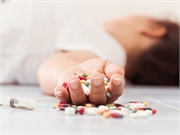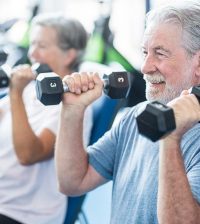- Experts Warn Bird Flu Could Pose Growing Risk to Human Health
- Judge Blocks Cuts to $11 Billion in Public Health Funding
- Common Chemicals in Plastics May Harm Baby Brain Development
- Trump Administration Orders More Cuts to CDC Budget
- FDA Delays Final Approval of Novavax COVID Vaccine
- Medicaid Expansion Protected Americans During COVID-19 Pandemic
- Antidepressants Linked To Sudden Cardiac Death
- Discrimination Dramatically Increases Risk for Depression, Anxiety
- New Blood Test Can Diagnose, Track Alzheimer’s Disease
- Bedsores More Likely In Short-Staffed Hospitals Leaning On Nurse OT, Travel Nurses
1 in 4 Opioid ODs Involves Kids and Teens

More than a quarter of all opioid overdoses in the United States involve teenagers, and a full fifth of those cases were likely suicide attempts, new research shows.
The findings follow an in-depth analysis of nearly 754,000 American opioid poisoning cases that occurred between 2005 and 2018. All had been reported to the U.S. National Poison Data System. And almost 208,000 of those cases involved children 18 years old or younger.
During the 13-year study period, the pediatric overdose landscape has taken a turn for the worse, said study author Dr. Megan Land, a pediatric critical care fellow at Emory University’s School of Medicine in Atlanta.
Most significantly, said Land, “the proportion of children with suspected suicide due to an opioid poisoning increased dramatically over our study period,” rising from just under 14% in 2005 to more than 21% by 2018. That increase, she said, “echoes findings in recent studies demonstrating that the incidence and rate of pediatric suicide attempts by [opioid] poisonings has been rising since 2011.”
The study also found that during the same period, the percentage of young patients admitted to a critical care unit following an opioid overdose rose from 6.6% to 9.6%.
Similarly, by 2018 the risk that a young overdose patient would end up in life-threatening situation and/or end up with a major disability or disfigurement ticked up from .10% to .13%. And the risk that a young person would die from an overdose also rose, from .18% in 2005 to .28% in 2018.
On a more positive note, Land observed that as a percentage of all cases, pediatric opioid overdose cases peaked in 2010. Since that time, the trend has been heading in a downward direction.
But most trends are less encouraging. For one, opioids themselves are becoming more potent over time, the researchers observed, so smaller doses have the potential to cause an overdose.
At the same time, state-based legislative efforts to encourage greater use of the potentially lifesaving anti-opioid antidote naloxone appear to have had only limited success. Use of the drug rose only slightly during the study time frame, from 42% to 51%.
As to why, Land said poor naloxone adoption remains “a complex question without a simple answer.”
Still, suicide attempts account for only a part of the overdose risk picture among young Americans. More than half (51%) of the youth overdose cases in the study involved preschoolers who had accidentally ingested an opioid medication, Land noted.
So, what can be done? Three medical and addiction experts not part of the study offer some suggestions.
Dr. Robert Glatter, an emergency physician at Lenox Hill Hospital in New York City, said it’s vital to “educate our children about the dangers of opioids, and how even ‘experimentation’ can lead to addiction.
“School curriculums should facilitate open communication with adolescents,” Glatter added, “and involve guidance counselors to monitor students for signs of irregular or atypical behavior, falling grades and oppositional attitudes.”
Linda Richter, director of policy research and analysis with the Center on Addiction in New York City, said that “it is never too early to protect children from the potentially life-threatening harms of addictive substances.”
She highlighted a number of the center’s practical recommendations, including keeping all prescription meds well out of a child’s reach and banning illegal drugs altogether.
The center also advises disposing of all prescription medications the moment they’re no longer needed. And Richter suggests making sure the National Poison Control Center contact information is in your phone in advance, by calling 1-800-222-1222 or texting POISON to 797979.
“If common-sense recommendations for keeping all opioid and other addictive products out of sight and reach of children are followed, the number of children accidentally exposed to opioids and their harmful effects can and should be zero and the number of teens who access these drugs intentionally would be greatly reduced,” Richter said.
And parents can do their part as well.
“Parents and families need to be aware of the risks of opioids, and vigilant to secure supplies safely to prevent access by children and adolescents,” said Dr. Marc Fishman, medical director of Maryland Treatment Centers in Baltimore.
“Parents and families also need to be watching for evidence of common psychiatric illness in young people, such as depression, and not explain it away as ‘normal teenage growing pains’ that they will just ‘grow out of.’ Youth suicide is real, all-too-common and preventable,” Fishman added.
Land and her colleagues are to present their findings this week at a meeting of the Society of Critical Care Medicine, in Orlando, Fla. Such research is considered preliminary until published in a peer-reviewed journal.
More information
There’s more about opioids and adolescents at U.S. Department of Health and Human Services.
Source: HealthDay
Copyright © 2025 HealthDay. All rights reserved.









